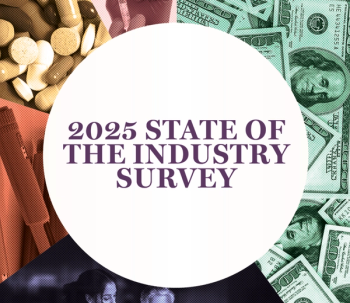
Generalized Anxiety Disorder Affects More Than 1 in 10 U.S. Adults | AMCP Nexus 2025
Key Takeaways
- GAD prevalence in the U.S. rose to 10.3% from 2021-2023, with women disproportionately affected.
- Increased diagnoses reflect societal stressors, improved recognition, and reduced stigma around mental health.
New data reveals a rising trend in generalized anxiety disorder (GAD) prevalence among U.S. adults, emphasizing the need for improved diagnosis and treatment.
More than 1 in 10 adults in the United States were affected by generalized anxiety disorder (GAD) between 2021 and 2023, with annual rates continuing to rise, according to a poster presentation shared at the annual AMCP Nexus conference.
GAD is a chronic mental health condition caused by persistent and uncontrollable worry that can interfere with daily functioning and reduce quality of life. According to the National Institute of Mental Health (NIMH),
Although GAD affects many people, previous estimates of how common it is in the U.S. have varied and are often out of date. NIMH reported that about 2.7% of U.S. adults have GAD in a given year and 5.7% will have it at some point in their lives.
The disorder is more common in women, affecting 3.4% of women compared to 1.9% of men. Among adults with GAD, about one-third have serious problems in daily life, 44.6% have moderate problems and about one-quarter have mild problems. Teenagers can also have GAD, with roughly 2.2% of those aged 13 to 18 years meeting the criteria.
Analyzing the existing data, researchers of the study presented at AMCP from MindMed, Trinity Life Sciences and other academic institutions sought to provide an updated and clearer picture of GAD prevalence and incidence using real-world data.
To achieve this, researchers conducted a retrospective analysis using the Komodo Healthcare Map database, which includes insurance claims for millions of U.S. patients. They identified adults diagnosed with GAD through ICD-10 codes and prescriptions for GAD-related medications.
Prevalence and incidence were calculated using payer-complete claims data, then adjusted to reflect the broader U.S. population using Census data. Patients had to be continuously enrolled for the duration of the study period, and new cases were defined as those without a prior GAD diagnosis for at least two years.
Study results showed a steady increase in diagnosed cases over time.
The one-year prevalence rose from 5.4% (13.3 million adults) in 2020 to 6.6% (16.4 million adults) in 2023. Across the three-year period from 2021 to 2023, an estimated 25.3 million adults — about 10.3% of the U.S. adult population—were affected by GAD.
It was also revealed that newly diagnosed cases increased each year, from 2,082 per 100,000 adults in 2020 to 2,267 per 100,000 in 2023. Most of these patients were women (67.4%) with a median age of 41 years and a mean age of 43.7. Most were commercially insured (60.6%), while 21.5% were covered by Medicare and 17.9% by Medicaid.
One of the study’s authors shared with Managed Healthcare Executive that the rise in GAD diagnoses reflects both greater awareness and ongoing social pressures.
“The prevalence of GAD has continued to rise in recent years, reflecting the convergence of societal stressors and progress made in the recognition and diagnosis of the disorder,” the researcher said. “Factors such as economic instability, social isolation, and chronic stress have contributed to elevated anxiety levels across the U.S. adult population. At the same time, improvements in clinical recognition and evolving societal attitudes toward mental health have helped reduce stigma and encouraged more individuals to seek evaluation.”
The researcher added that policy changes, such as the U.S. Preventive Services Task Force’s 2023 recommendation to screen adults under 65 for anxiety, have also played a role in identifying more cases.
As diagnoses increase, the findings provide valuable insights for care delivery and policy.
“Although rising diagnosis rates may reflect improved detection and access to care, they also pose significant implications for managed-care systems, insurance coverage, public health strategy and, most importantly, individuals experiencing anxiety symptoms,” the researcher said, adding that providers face growing demand for services and training while policymakers must advance early-screening initiatives and ensure mental healthcare is treated equally to physical healthcare.
While this study provides one of the most current and detailed estimates of GAD in the U.S., the researcher noted that claims data only captures diagnosed patients — meaning the true burden may be even greater.
“Estimates have suggested that upwards of 50% to 70% of individuals with GAD symptoms do not receive a formal diagnosis,” the researcher said.
The research team is currently evaluating data from the National Health and Wellness Survey to better understand the outcomes among those who are symptomatic but undiagnosed.
According to the researcher, this upcoming work aims to show that untreated anxiety carries heavy personal and economic costs — and that earlier detection and access to care could ease the overall burden of GAD on both those affected and the healthcare system.
Newsletter
Get the latest industry news, event updates, and more from Managed healthcare Executive.





















































